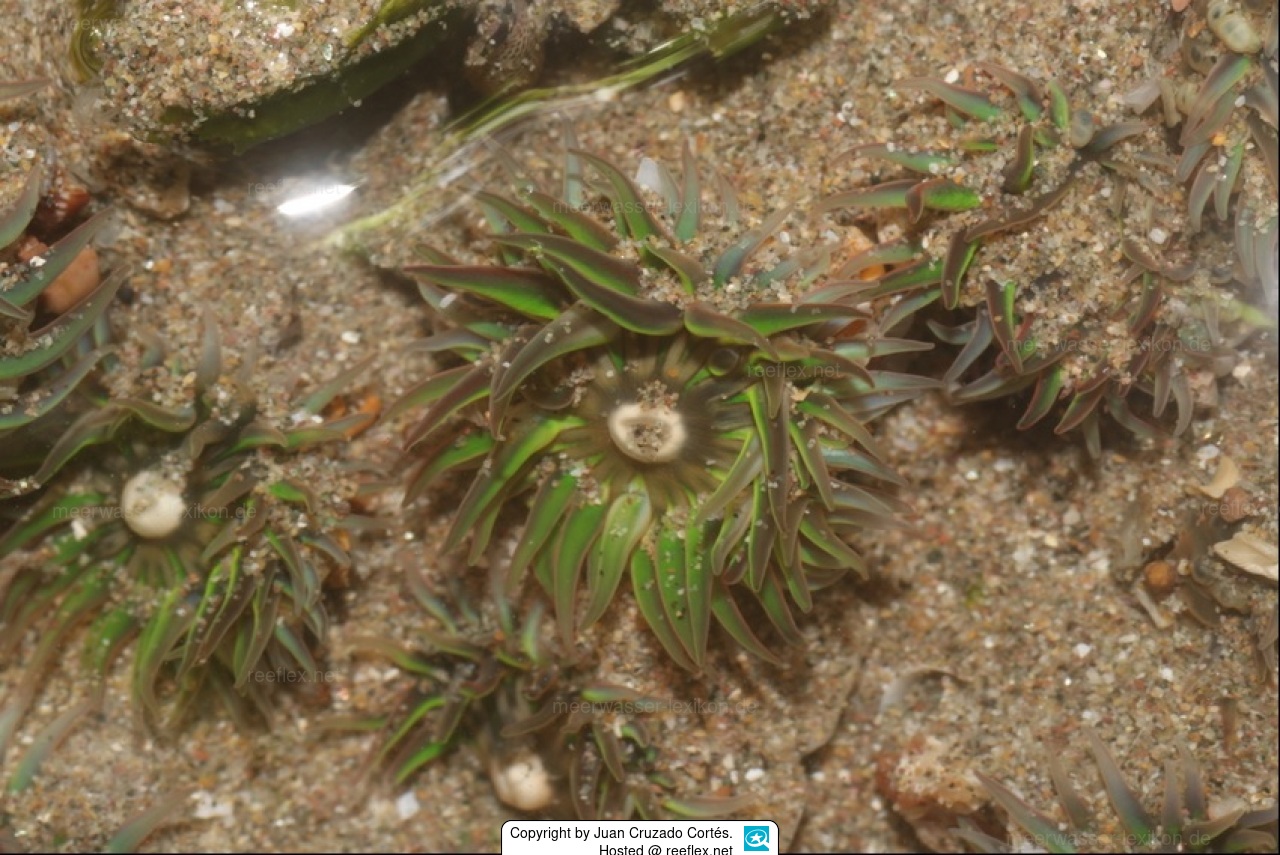Info
Anthopleura mariscali has an orange to pink column that is darker distally and typically white in color around the edges.
This sea anemone lives in small cracks and crevices in reef and on sand and shell debris, there it attaches firmly to the substrate.
The body column is typically 7 mm long, the diameter of the mouth disc is slightly larger at 15 mm, and the diameter of the foot disc is about 7 mm.
hold on to stones and shell debris in life
Color of preserved specimens grayish-brown to peach, acrorhagi opaque white.
Oral disc and tentacles.
Inner tentacles are longer than outer tentacles and are usually held erect; outer tentacles are directed downward.
In life, each tentacle tapers to a blunt tip that is perforated.
The number of tentacles is 40 -100, depending on the size of the animal.
Oral disc is brownish, mesenteric insertions are visible as pale lines.
Actinopharynx is creamy white, mouth is typically same color as body column, prominent, rounded, elevated on mouth cone in center of disc.
Tentacles paler than mouth disc, some with reddish sheen on mouth surface; with green longitudinal stripe that may extend to mouth disc.
Often the moon disk of the sea anemone is covered with sand.
Etymology. Anthopleura mariscali is named for Dr. Richard N. Mariscal in recognition of his many contributions to the study of cnidarians.
Dr. Mariscal participated in the GISP when he collected the specimens.
This sea anemone lives in small cracks and crevices in reef and on sand and shell debris, there it attaches firmly to the substrate.
The body column is typically 7 mm long, the diameter of the mouth disc is slightly larger at 15 mm, and the diameter of the foot disc is about 7 mm.
hold on to stones and shell debris in life
Color of preserved specimens grayish-brown to peach, acrorhagi opaque white.
Oral disc and tentacles.
Inner tentacles are longer than outer tentacles and are usually held erect; outer tentacles are directed downward.
In life, each tentacle tapers to a blunt tip that is perforated.
The number of tentacles is 40 -100, depending on the size of the animal.
Oral disc is brownish, mesenteric insertions are visible as pale lines.
Actinopharynx is creamy white, mouth is typically same color as body column, prominent, rounded, elevated on mouth cone in center of disc.
Tentacles paler than mouth disc, some with reddish sheen on mouth surface; with green longitudinal stripe that may extend to mouth disc.
Often the moon disk of the sea anemone is covered with sand.
Etymology. Anthopleura mariscali is named for Dr. Richard N. Mariscal in recognition of his many contributions to the study of cnidarians.
Dr. Mariscal participated in the GISP when he collected the specimens.







 Juan Cruzado Cortés, Mexiko
Juan Cruzado Cortés, Mexiko























